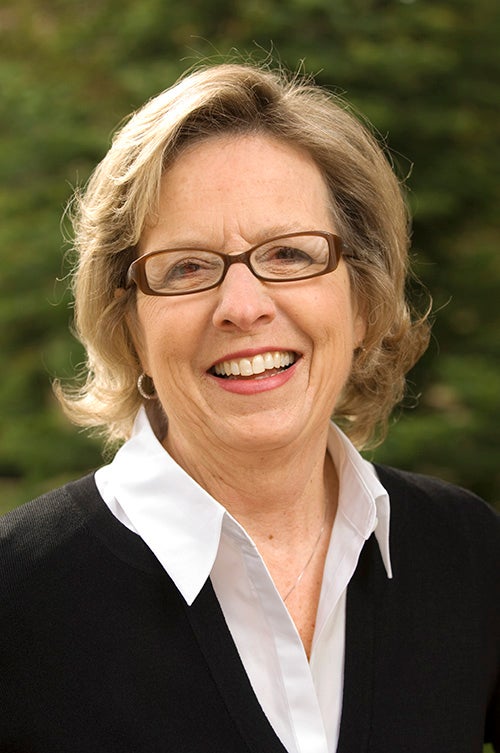When disaster strikes home for students
Stanford undergraduate and graduate students were among the millions of people affected by three hurricanes, two earthquakes and a rash of California wildfires over the past three months.
Hurricanes Harvey, Irma and Maria cumulatively devastated parts of Puerto Rico, the U.S. Virgin Islands, Florida and Texas. In September, Mexico was rocked by two damaging earthquakes, while wildfires raged in both Northern and Southern California throughout the fall.
The university contacted more than 900 students whose homes are in the affected areas, offering help and support. Chris Griffith, associate vice provost for student affairs, led the effort and answers questions about what the university did and what Stanford students experienced and needed.
What outreach does Stanford do when students are affected by disasters?
When a disaster happens – and good examples are the three recent hurricanes, the earthquakes in Mexico and the North Bay fires – Student Affairs reaches out via email to students whose permanent addresses are in the affected areas. Our objective is making sure to the degree that we can that our students, their families and friends are safe and providing them with the names of staff who can serve as their contact for questions and can make referrals to other offices.
The staff members who recently worked with affected students were Edith Wu, associate dean for new and continuing student programs in Undergraduate Advising and Research, who was the contact for new students; Koren Bakkegard, associate dean in Residential Education, who helped continuing students; and Ken Hsu, assistant vice provost and director of Graduate Life, who was the contact for graduate students.
We called that group together several times during the numerous recent disasters. Early on, we established a protocol based on our experiences with Hurricane Katrina in 2005, even though these situations varied in terms of the nature of the disaster and where students were at the time.
What type of support did the university offer?
In some cases, we coordinated students’ early arrival when they needed to come back to campus to avoid an oncoming disaster or because their communities had been overwhelmed by one that had already occurred. We also helped manage academic and administrative logistics if they knew they were going to be delayed. Karen Cooper and her staff in the Financial Aid Office in particular were incredibly helpful to students who requested a reassessment of their needs. But everyone to whom we referred students throughout campus was wonderful.
In terms of new students, Edith Wu talked to many parents who needed reassurance because they had to stay behind to deal with the aftermath of a disaster rather than accompany their kids as they had intended. Edith was able to reassure parents that we would look after their students. But still, there are a lot of expectations for parents around dropping their children off at college for the first time. Edith had phone calls from parents in advance of hurricanes, worried that plans would be disrupted. We also heard from one student who called from the Virgin Islands prior to the hurricane to let us know she was able to get a boat to Puerto Rico and a plane out.
How were students and their families affected?
Some of the students were profoundly affected. Some reported having to leave their homes suddenly to escape flooding. Some were volunteering in recovery efforts. Some left before a hurricane hit, but then were unable to reach their families to confirm that they were OK. And they were all deeply affected by the impact on their communities.
Associate Vice Provost for Student Affairs
Koren Bakkegard talked to one returning student whose family had only minutes to evacuate their Houston home during the flooding. The Army pulled up with a garbage truck to evacuate the family because that was the only vehicle with wheels high enough to get through the water. The student left with her laptop, wallet and phone. She didn’t even have shoes. Hers was probably the most dramatic story, and the university was able to help with funds for clothing.
Ken Hsu heard from graduate students in each of the disasters. Many were seeking ways to help, including one student who served as a volunteer firefighter in the North Bay Tubbs Fire, working 17-hour shifts. Three graduate students sought academic accommodations because they knew they would arrive late to campus and because of the stress involved in responding to the disasters. All expressed profound worry and grief about effects on families and communities.
How many students in total did you recently reach out to?
We communicated with more than 850 students regarding the hurricanes in Texas, Louisiana, the U.S. Virgin Islands, the Caribbean Islands and Florida and the earthquakes in the Mexican states of Chiapas, Oaxaca and Tabasco. We reached out to 70 students regarding the wildfires in Northern and Southern California.
Absent a disaster, there are students who need ongoing help because, for instance, they might be homeless. What does the university do in support of such students?
Stanford is a caring place and has made a commitment to help our students thrive personally and academically. When events or circumstances impact their ability to thrive, we are committed to mustering the resources needed to help. We are, for instance, able to draw on special funds, like the Opportunity Fund, which provides students with financial support for things like purchasing a plane ticket so a parent can attend graduation.
We may not be able to change their circumstances, but as Student Affairs staff, we support students through difficult times. We know what resources are available and who to call when students need help, and we are grateful to the many offices on campus willing to respond. The Student Affairs staff, in collaboration with our colleagues around the university, operate from an ethic of care, and we hope that students will contact us for help whether their need is an emergency or not.

